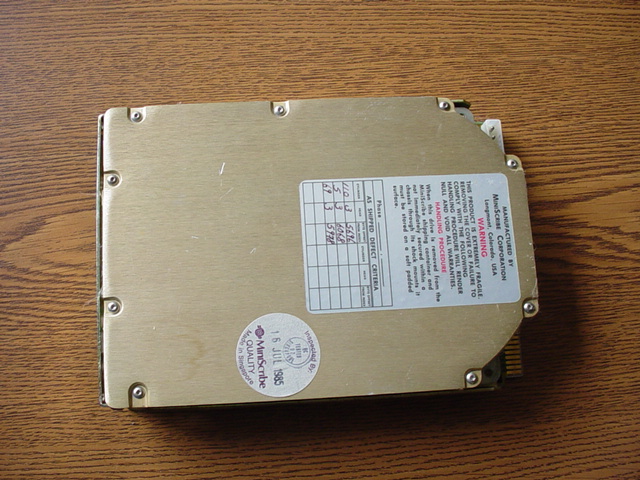
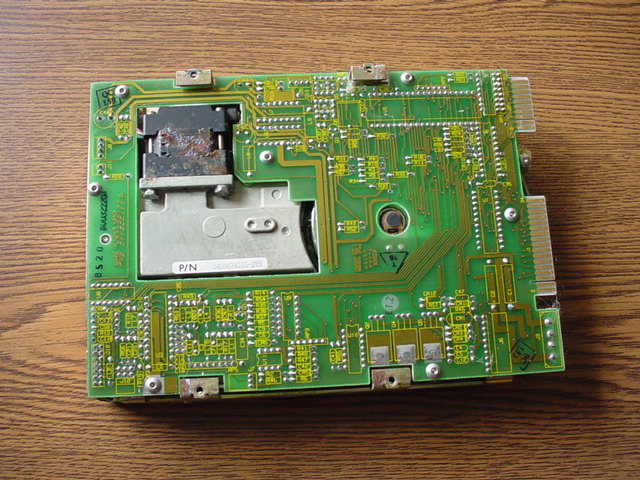
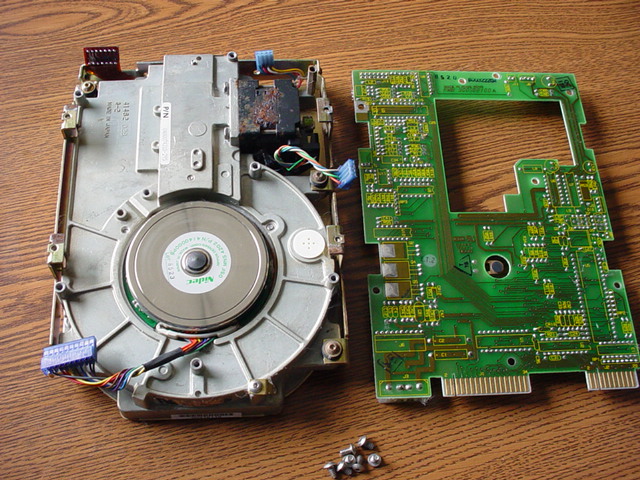
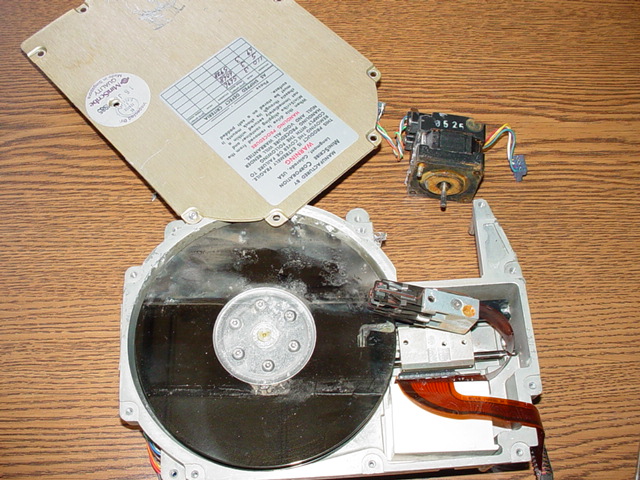
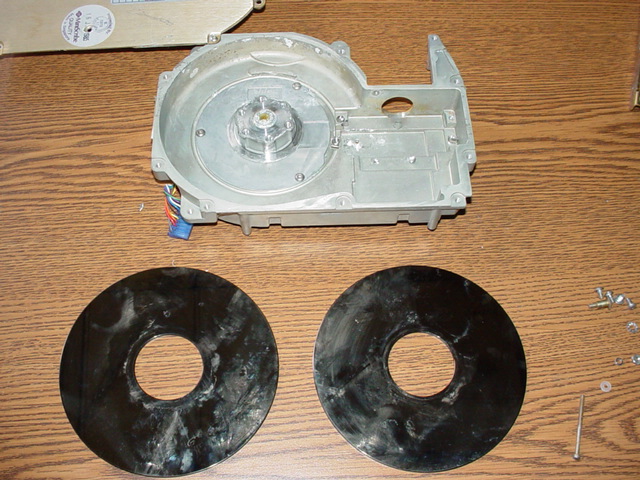
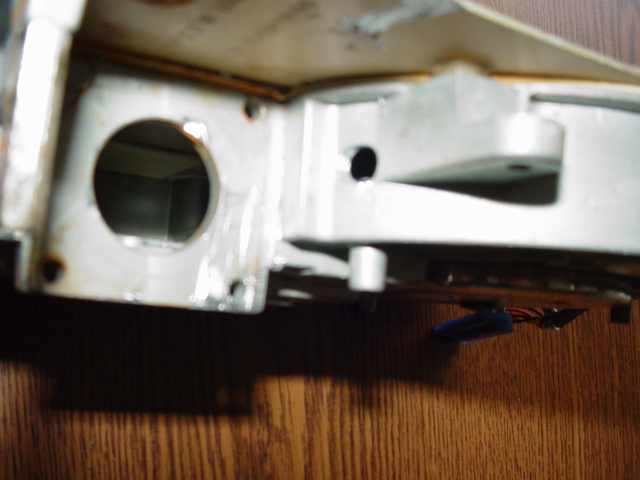
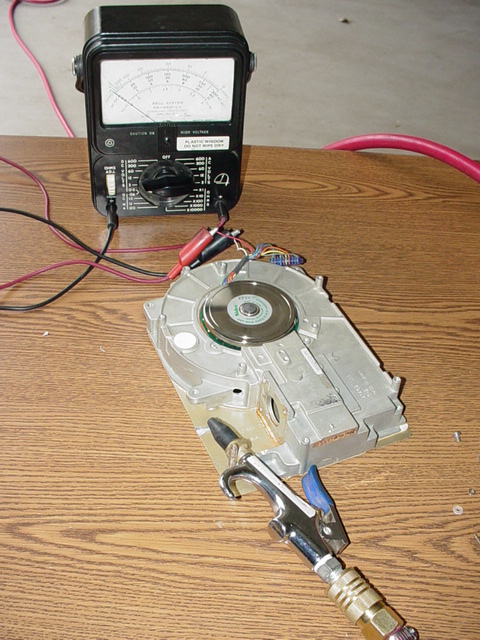
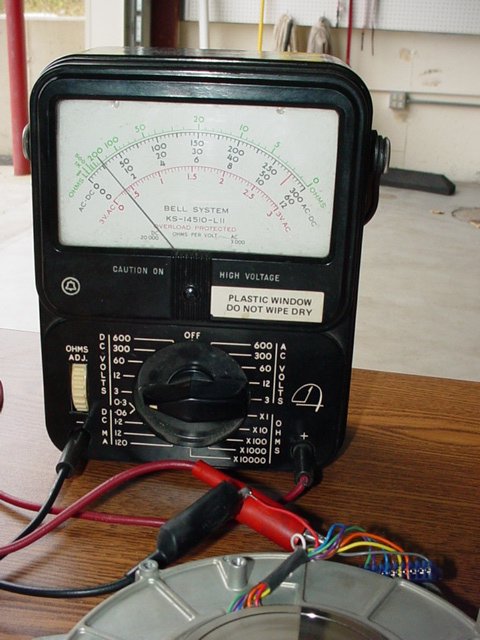
Making a Tesla-like Turbine
OR
New Uses For Old Computer Parts
Caution: I have had these units almost explode by providing too much pressure to them! Anything can be dangerous in the wrong hands! Please use good judgment and be careful! I do not in any way encourage, recommend or suggest that anyone ever do this (though it is very easy, and simple, and fun, it could potentially hurt someone)! The components are not being used for their intended purpose! If you are the type of person who thinks they should sue McDonald's for making hot coffee, or because their burgers made you fat, exit now!
Many years ago (approximately 1991) I played around with building a Tesla Turbine to test the principle of operation. It never occurred to me that others might be interested in making something similar. The basic components are part of any hard disk drive. Rather than throwing away the next hard drive that goes bad, consider giving it new life as a Tesla-like turbine. Here is what I did......
| Step 1: Start with almost any old hard disk
drive. These can be obtained almost free at computer salvage companies,
or the next time you fry one in your computer... In this case, I had
a 1/2 height, 5", 20 Mb drive lying around. (the old full height drives
might work even better...)
|
Step 2: Remove the screws that hold the cover
in place. These are usually "star" screws, and if you don't have "star"
drivers that will fit, you may be able to use allen wrenches.
|
| Step 3: Remove the screws that secure the hard
disk platters in place.
|
Step 4: Remove the magnetic head assembly,
filters, etc from inside the case.
|
| Step 5: Replace the disk platters and secure
them using the original screws.
|
Step 6: Replace the cover and tighten
the screws.
|
| Step 7: Drill a hole for air input. I have only tried a couple of positions, but it seems that the closer to the exhaust hole (head actuator assembly opening) the better. | Step 8: Locate the lines that are used to initially send power to the disk drive motor. Since this is a permanent magnet motor, it will become a generator when the motor spins without electrical input... |
| Step 9: Hook an input source. I
used an an air compressor to push air into the small hole I drilled. I
would imagine that a liquid or steam would also work...
|
Step 10: If you have identified the power
lines correctly, you can hook up a volt meter and actually show that the
unit is functioning.
|
| Step 11: Amaze your friends with your ingenuity and then tell them to visit my companies Web Page at: http://www.go-ev.com | CAUTION!!! I had an experience where the cover plate blew apart when I gave it a little too much air pressure. Consider all possibilities.... |

This page was created by George F. Hamstra.
The last update to the page was on Saturday, November 15, 2003.
This page has been accessed
times.
Lyrics